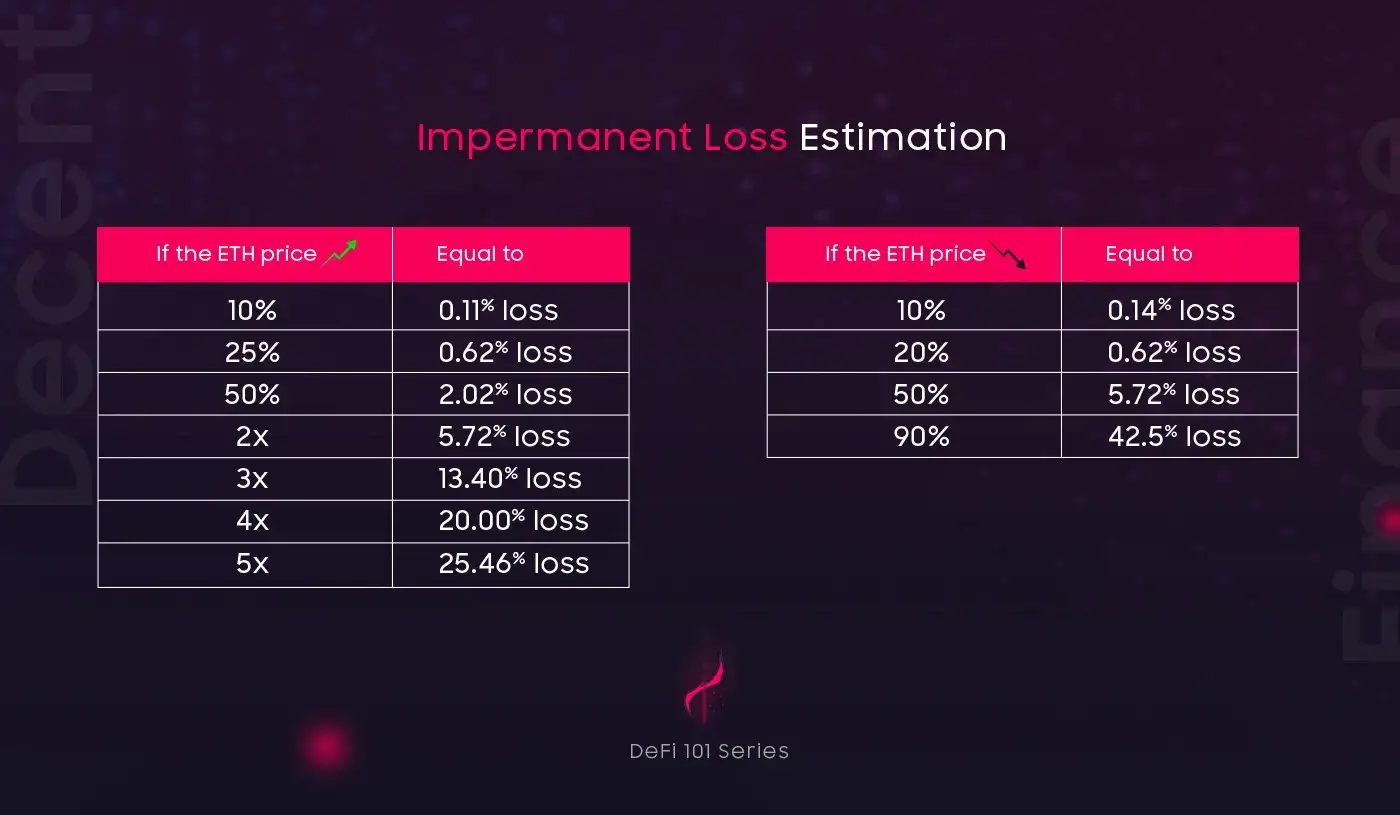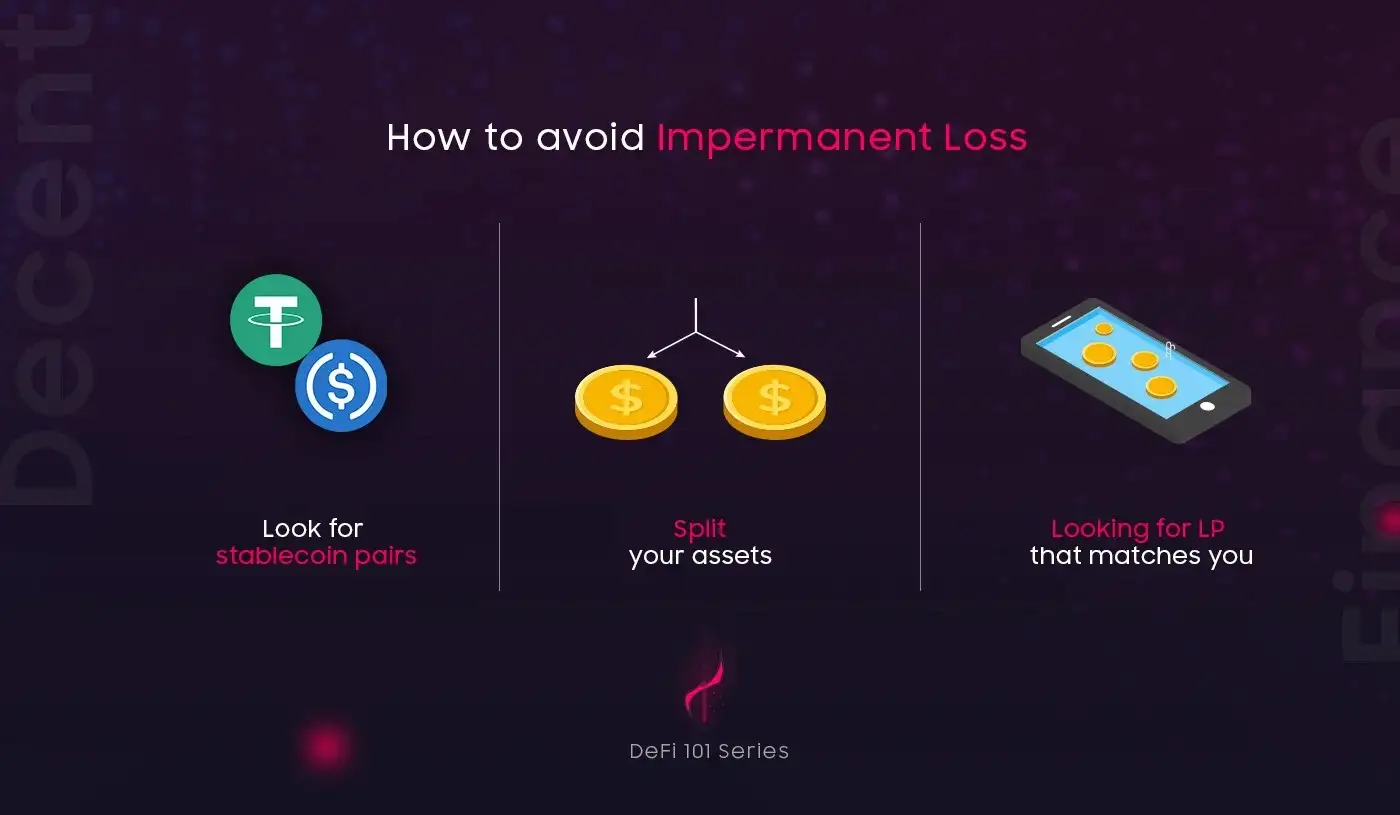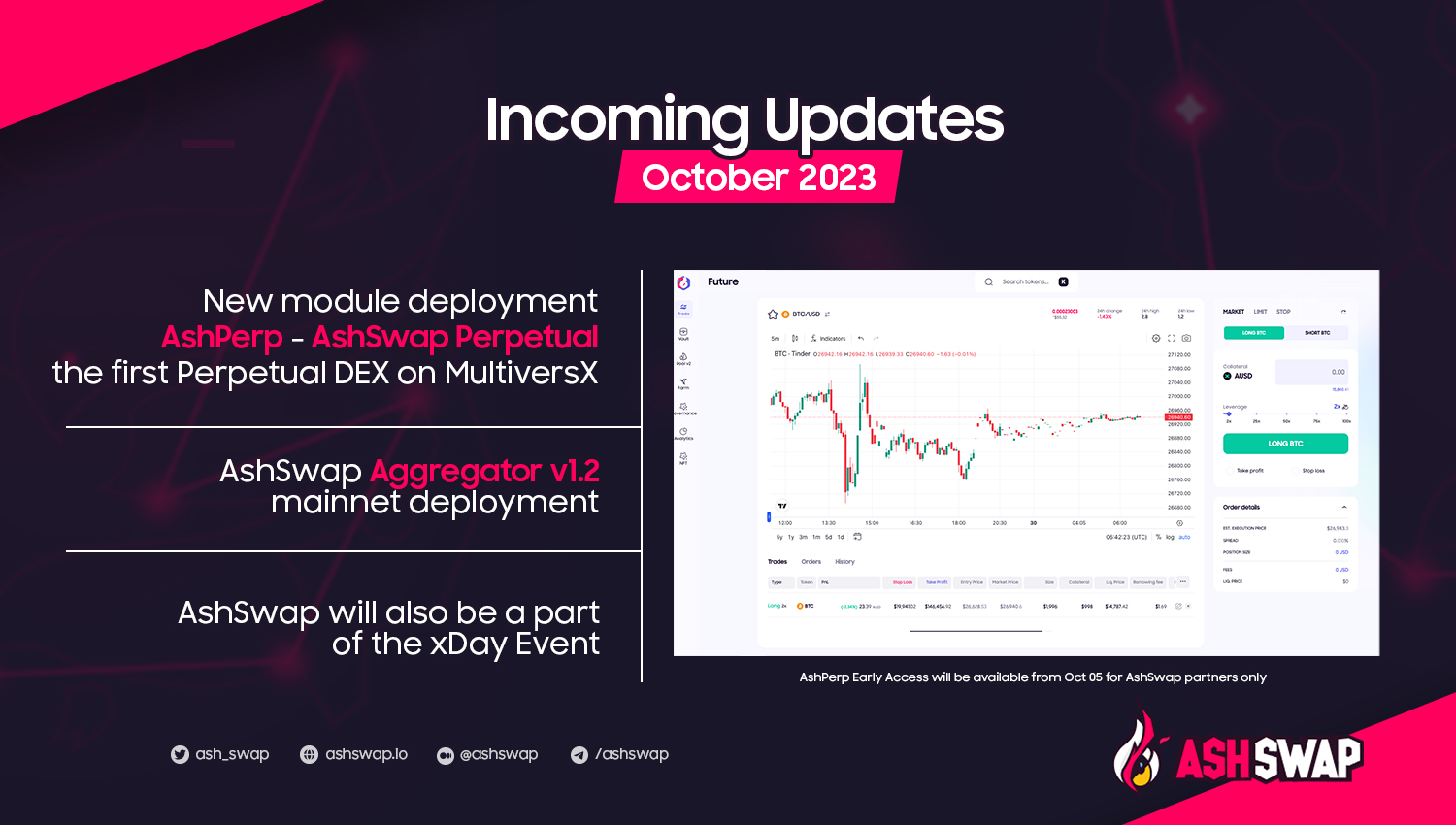Impermanent loss (IL) is when a liquidity provider has a temporary loss of funds because of volatility in a trading pair (source: Coinmarketcap.com)
Impermanent Loss — what is it?
When you provide liquidity to a liquidity pool, the price of your deposited assets changes compared to their price when you deposit them, that’s when impermanent loss (IL) happens. The bigger this change is, the more you are exposed to IL. However, it is the potential loss on paper that exits and it only becomes “real” when you withdraw the tokens from the liquidity pool.
How does Impermanent Loss occur?
We could use an example of what impermanent loss may look like for Erik — a liquidity provider.
In this case, we assume that the particular automated market maker (AMM) is Uniswap, with no transaction fees; the pool has 2 tokens, ETH and USDT; and 1 ETH = 1,000 USDT = 1,000 USD — this is calculated for tokens available INSIDE the pool only.
Erik deposits 1 ETH and 1,000 USDT in a liquidity pool, this means the dollar value of Erik’s deposit is 2,000 USD at the time of deposit.
The pool has 10 ETH and 10,000 USDT at this time — funded by other LPs like Erik; so Erik has a 10% share of the pool.
constant_product = eth_pool_balanceusdt_pool_balance = 10*10,000 = 100,000
Now, outside the pool, the price of ETH increases to 1,200 USDT, e.g. on Binance.
Arbitrage traders will use 1,000 USDT to buy 1 ETH, then go to Binance to sell it for 1,200 USDT; these traders will buy and sell ETH until the exchange rate in the liquidity pool is 1 ETH = 1,200 USDT.
The calculation formula of Uniswap is:
eth_liquidity_pool = sqrt (constant_product / eth_price) == 9.1287 usdt_liquidity_pool = sqrt (constant_product*eth_price) == 10,954.45
Come back to Erik, because he owns 10% of the pool, so he now has 0.91287 ETH + 1,095.445 USDT.
Value _after_provide_liquidity = 0.91287*1200 + 1,095.445 == 2,190.89 USD
If he still HODL his assets in his wallet, he still keeps out 1 ETH + 1000 USDT.
Value_if_HODL = 1*1,200 + 1,000 = 2,200 USD
We see that Erik has a value loss equal to 9.11 USD.
Impermanent loss estimation
Impermanent loss can happen no matter what direction the asset price changes.
Let’s look at how much impermanent loss you will receive for various price changes in an ETH/USDT pair.

As you can see, an impermanent loss is inevitable when using automated market makers like a liquidity pool and it decreases your gains and can dramatically increase your losses.
You can see the estimated Impermanent Loss using this tool: https://dailydefi.org/tools/impermanent-loss-calculator/
How to avoid Impermanent Loss?

We think that you have a good overview of what impermanent loss is all about, now we can explore some ways to decrease your exposure to impermanent loss.
- Look for stablecoin pairs: if you provide liquidity to a pair like USDT-USDC, you will not be exposed to any risk of impermanent loss since their prices are mostly stable, this is an effective strategy in a bear market since you still profit from your share in trading fees.
- Split the assets: you can split your assets into 2 equal parts, add only one into a liquidity pool, and HODL the other. You will be able to cut the impermanent loss by 50%, on the other hand, your benefit will decrease by 50% as well.
- Looking for LP that matches you: it depends on your taste of risk, you could do research and analysis on which pool can have sufficiently trading fees reward to cover the impermanent loss amount. Liquidity mining is not a bad choice. This strategy could take time, but, gold flakes in the sand.
Final thoughts
Impermanent loss is one of the fundamental concepts that anyone who wants to learn about DeFi should understand. Despite the risk of it, it is still possible to determine whether a certain liquidity pool is profitable for you.
If you want to know more about the DeFi world, let’s take a look at our DeFi 101 Series.
We hope that our article can help you somehow.
Regards,



